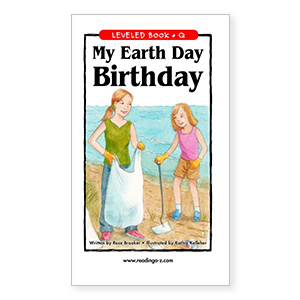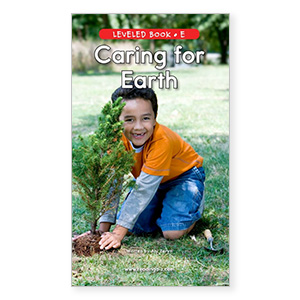Earth Day promotes global awareness of climate change and asks people to protect the planet throughout the year. Schools and students can do their part by "going green" however they can!
Why Celebrate Earth Day?
In April 1970, the first Earth Day took place: 20 million Americans called for better protections for the planet. As a result, in December 1970, Congress created the U.S. Environmental Protection Agency to address environmental issues, leading to the Clean Air Act, the Clean Water Act, and the Endangered Species Act. On Earth Day 2016, the United States signed the Paris Agreement along with more than 120 other countries.
The Earth Day movement, part of the environmental movement around the world, began driving positive action for the planet with a vision of transformational change and a zero-carbon future. Providing civic engagement opportunities from local to global levels, Earthday.org now works to meet the climate crisis, stop pollution, create green jobs, and protect communities.
What Is Environmental Activism and How Can Teachers Help?
We only have one planet to live on. The Earth is responsible for our health, our happiness, and our very survival as individuals and as a species. Environmentalism tries to achieve a sustainable balance between humans and the natural world we depend on, while preserving biodiversity and conserving resources to rebuild a healthy ecology. Environmental activism refers to work addressing environmental concerns, work that attempts to solve environmental problems through diverse solutions. One of the goals of the United Nations is to “take urgent action to combat climate change and its impacts.”
Climate education and environmental literacy are crucial to solving the environmental crisis the world now faces. Teachers can help enormously by incorporating environmental education into all subjects whenever possible, at all grade levels.

Make Every Day Earth Day
Kids can help protect the environment! Small acts like these big three are important ways to make an impact—and your students can do them every day:
- Turn off the water while you brush your teeth, shampoo your hair, or scrub dishes.
- Turn off lights and fans when you leave a room.
- Reduce, reuse, and recycle.
Restore Some Balance to the Ecosystem: Plant a Tree
What’s our favorite Earth Day activity for students of all ages? Plant a tree! It’s meaningful, memorable, interesting, messy, and fun. And it lasts in an easily visible way: kids can watch the tree grow. Trees live a lot longer than humans, come in 60,000 species, and turn carbon dioxide into oxygen with their magically photosynthesizing leaves. Pretty much everything about trees is fascinating and beautiful, including how slowly (to us) they grow and how fragile they can be, despite their powerful appearance when they tower above us. While billions of trees are cut down each year around the world, tree planting is a great opportunity for students to learn about how important trees are to the planet.
Try using these books in class on Earth Day:

With visual splendor,

My Earth Day Birthday follows Tara as she educates others on ways they can help the planet.

Caring for Earth suggests many ways to care for the Earth, supported by photographs.
Access earth-related science experiments, books, lesson plans, and more Science A-Z resources about Earth Day!
Explore Raz-Plus and Science A-Z resources to celebrate Earth Day in your classroom and educate your students about climate and environmental issues throughout the school year. Don’t have access? Start a FREE 14-day trial today!
EXPLORE RAZ-PLUS EXPLORE SCIENCE A-Z



